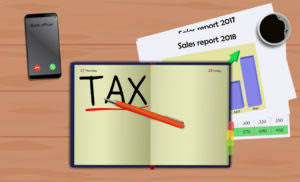
Current assets are available within 12 months; current liabilities are due within 12 months. If the ratio is too high (i.e. over 2), it could signal that the company is hoarding too much cash, when it could be investing it back into the business to fuel growth. And, sometimes, working capital ratio formula unexpected business opportunities arise, and having cash on hand allows you to take advantage of them. For example, a supplier may be liquidating inventory or offering discounts for bulk orders. If it’s one of your bestsellers, you can stock up to improve your profit margin.
- For example, retailers often gear up for the fourth quarter or gift-giving holidays with additional inventory or temporary employees.
- That means your business will find itself financing accounts receivable for some time until they are paid up.
- These companies need little working capital being kept on hand, as they can generate more in short order.
- Accounts receivable are payments your customers owe for goods or services.
- Before this happens to your business, there are steps you can take to increase working capital.
We can see in the chart below that Coca-Cola’s working capital, as shown by the current ratio, has improved steadily over the last few years. Current assets are assets that a company can easily turn into cash within one year or one business cycle, whichever is less. They do not include long-term or illiquid investments such as certain hedge funds, real estate, or collectibles. Products that are bought from suppliers are immediately sold to customers before the company has to pay the vendor or supplier.
Working Capital Ratio
Next, use data analytics to predict future occurrences and avoid risk factors that could be financially devastating. Accounts receivable are payments your customers owe for goods or services. These pending payments can be paid via a wire transfer or checks, which are easily converted into cash.
Instead of being late with payments to your suppliers or lenders, adequate liquid funds on hand can keep you current while you wait for the marketplace to change. For example, retailers often gear up for the fourth quarter or gift-giving holidays with additional inventory or temporary employees. Having extra working capital can also help you meet obligations during slower periods. For example, if you have $750,000 in current assets and $400,000 in current liabilities, your net working capital amount is $350,000, and your working capital ratio is 1.875. Other current liabilities vary depending on your occupation, your industry, or government regulations.
How do you increase your working capital?
If it takes too long, your funds will be locked in for a considerable period with no returns, which could make it hard for you to pay your bills. You can then pay your supplier with the cash generated from sales and purchase more inventory. A lower ratio means cash is tighter, so a slowdown in sales could cause a cash-flow issue. As we’ve seen, the major working capital items are fundamentally tied to the core operating performance, and forecasting working capital is simply a process of mechanically linking these relationships.

Once the debt capacity of an organization is clearly understood, businesses can not only determine who to invest with, but can also influence negotiations with suppliers. Prepaid expenses are expenses you have paid for but have not been used or received. Once this expense is paid, businesses remove it from the balance sheet and add it as an expense on the business’s income statement. If your company has negative working capital, it’s important to understand why you’re not generating enough assets to cover your liabilities. In an ideal world, you would sell your goods, get your revenue from those sales and then pay your bills.
How to calculate current assets
You can also compare ratios to those of other businesses in the same industry. Both companies have a working capital (assets – liabilities) of $500,000, but Company A has a working capital ratio of 2, whereas Company B has a ratio of 1.1. In this blog, we’ll break down the concept of working capital, explore its significance in assessing a company’s finances, and provide the formulas you need to calculate it. At the risk of stating the obvious, that’s because cash is the very thing the cash flow statement is trying to solve for.
In mergers or very fast-paced companies, agreements can be missed or invoices can be processed incorrectly. Working capital relies heavily on correct accounting practices, especially surrounding internal control and safeguarding of assets. All components of working capital can be found on a company’s balance sheet, though a company may not have use for all elements of working capital discussed below. For example, a service company that does not carry inventory will simply not factor inventory into its working capital calculation. OWC is useful when looking at how well your business can handle day-to-day operations, while knowing how to work out NWC is useful in considering how your company is growing.
The section above is meant to describe the moving parts that make up working capital and highlights why these items are often described together as working capital. While each component (inventory, accounts receivable and accounts payable) is important individually, together they comprise the operating cycle for a business, and thus must be analyzed both together and individually. The working capital ratio is calculated by dividing current assets by current liabilities. However, a very high current ratio (meaning a large amount of available current assets) may point to the fact that a company isn’t utilizing its excess cash as effectively as it could to generate growth.
What Is Free Cash Flow? Formula and Statement Example – U.S News & World Report Money
What Is Free Cash Flow? Formula and Statement Example.
Posted: Wed, 04 Oct 2023 07:00:00 GMT [source]
Working capital is the money a business can quickly tap into to meet day-to-day financial obligations such as salaries, rent, and office overheads. Tracking it is key since you need to know that you have enough cash at your fingertips to cover your costs and drive your https://www.bookstime.com/articles/cfo-vs-controller business forwards. It’s important for businesses to utilize the net working capital formula because it enhances a companyʻs understanding of how cash ebbs and flows. Understanding the cash flow of a business is crucial to ensure daily financial obligations are met.
Elements Included in Working Capital
That equation is actually used to determine working capital, not the net working capital ratio. Generally speaking, an asset is anything of financial value that your company owns. However, for an asset to be considered current or liquid, it must be something that can be easily and quickly exchanged for cash in the short term. Small business lenders may help you cover financial obligations until you can improve your working capital ratio. You may want to consider a small business loan or open a business line of credit if you have liabilities that need to be paid. However, consistent negative working capital may lead to cash flow issues and hinder growth.
However, the decision to carry inventory can have a large impact on the bottom line. You can use the calculator to test various sales scenarios (optimistic, pessimistic, realistic) to determine how much working capital you’ll need to support your growth. In this situation, if your sales increase by $25,000 annually, you would need $8,390 in additional working capital.
